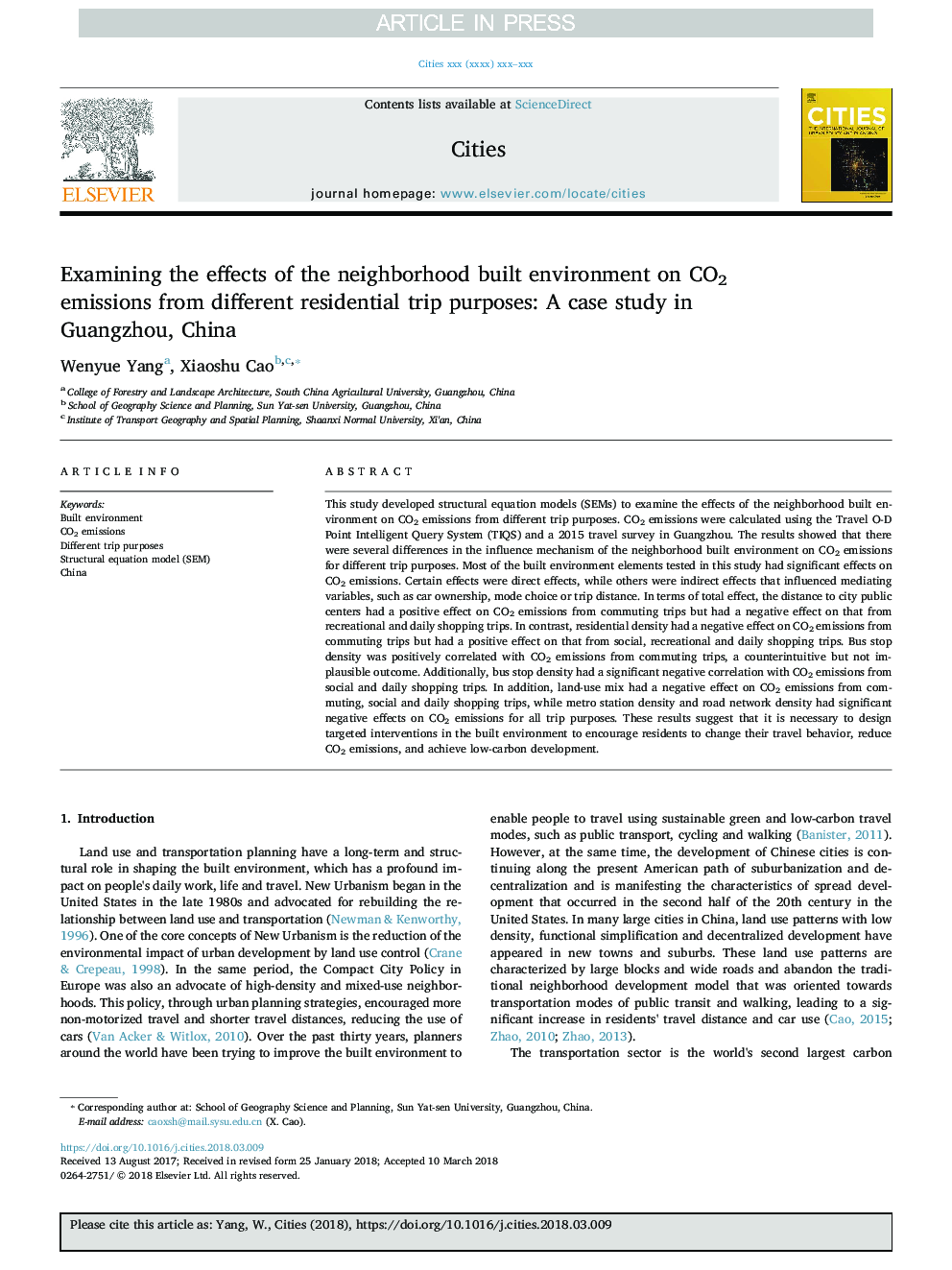| کد مقاله | کد نشریه | سال انتشار | مقاله انگلیسی | نسخه تمام متن |
|---|---|---|---|---|
| 8954653 | 1646031 | 2018 | 11 صفحه PDF | دانلود رایگان |
عنوان انگلیسی مقاله ISI
Examining the effects of the neighborhood built environment on CO2 emissions from different residential trip purposes: A case study in Guangzhou, China
ترجمه فارسی عنوان
بررسی اثرات محله ساخته شده محیط زیست بر انتشار گازهای گلخانه ای از مقاصد مختلف سفر مسکونی: مطالعه موردی در گوانگژو، چین
دانلود مقاله + سفارش ترجمه
دانلود مقاله ISI انگلیسی
رایگان برای ایرانیان
کلمات کلیدی
موضوعات مرتبط
علوم انسانی و اجتماعی
مدیریت، کسب و کار و حسابداری
گردشگری، اوقات فراغت و مدیریت هتلداری
چکیده انگلیسی
This study developed structural equation models (SEMs) to examine the effects of the neighborhood built environment on CO2 emissions from different trip purposes. CO2 emissions were calculated using the Travel O-D Point Intelligent Query System (TIQS) and a 2015 travel survey in Guangzhou. The results showed that there were several differences in the influence mechanism of the neighborhood built environment on CO2 emissions for different trip purposes. Most of the built environment elements tested in this study had significant effects on CO2 emissions. Certain effects were direct effects, while others were indirect effects that influenced mediating variables, such as car ownership, mode choice or trip distance. In terms of total effect, the distance to city public centers had a positive effect on CO2 emissions from commuting trips but had a negative effect on that from recreational and daily shopping trips. In contrast, residential density had a negative effect on CO2 emissions from commuting trips but had a positive effect on that from social, recreational and daily shopping trips. Bus stop density was positively correlated with CO2 emissions from commuting trips, a counterintuitive but not implausible outcome. Additionally, bus stop density had a significant negative correlation with CO2 emissions from social and daily shopping trips. In addition, land-use mix had a negative effect on CO2 emissions from commuting, social and daily shopping trips, while metro station density and road network density had significant negative effects on CO2 emissions for all trip purposes. These results suggest that it is necessary to design targeted interventions in the built environment to encourage residents to change their travel behavior, reduce CO2 emissions, and achieve low-carbon development.
ناشر
Database: Elsevier - ScienceDirect (ساینس دایرکت)
Journal: Cities - Volume 81, November 2018, Pages 24-34
Journal: Cities - Volume 81, November 2018, Pages 24-34
نویسندگان
Wenyue Yang, Xiaoshu Cao,
